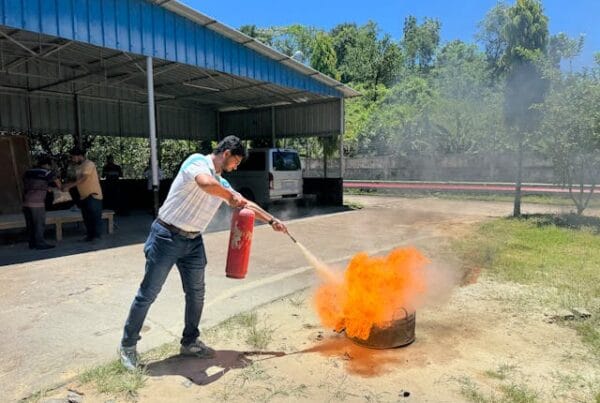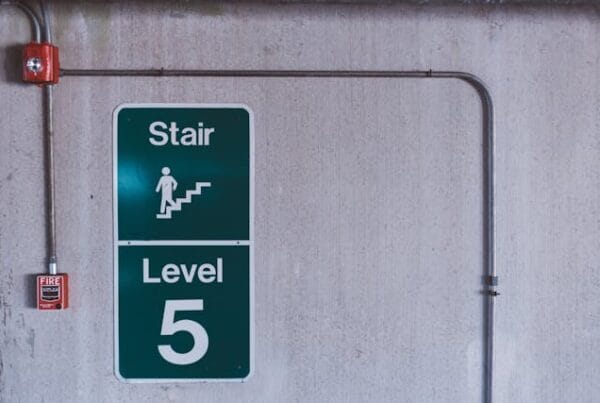Running a commercial property that requires fire safety plan in Hampton, VA comes with a wide array of responsibilities—and one of the most crucial is fire safety. While having smoke detectors, fire extinguishers, and sprinklers is essential, they are only part of a bigger picture. A well-documented, regularly updated, and professionally implemented plan in Hampton VA can mean the difference between minor damage and a devastating catastrophe.
Whether you manage an office, restaurant, warehouse, or retail space, a comprehensive fire safety strategy is your first line of defense against the unexpected. Here’s why your commercial property needs fire safety plan, and how it helps protect lives, assets, and business continuity.

What Is a FSP?
A fire safety plan is a detailed document outlining all procedures, protocols, and systems in place to prevent, detect, and respond to fire emergencies. In Virginia—including Hampton—businesses must comply with local fire codes governed by the Virginia Statewide Fire Prevention Code (SFPC) and NFPA standards, many of which mandate written safety protocols and employee training.
A typical plan includes:
- Fire prevention practices
- Evacuation routes and assembly points
- Locations and instructions for fire equipment
- Alarm system operation procedures
- Employee roles during emergencies
- Contact info for local emergency services and building management
- Procedures for fire drills and training
Why a Fire Safety Plan Matters for Hampton Businesses
1. Fire Safety Plan that Ensures Legal Compliance
Local codes in Hampton require certain commercial properties to submit or maintain an up-to-date plan. These rules vary depending on building size, occupancy type, and specific business operations (such as kitchens, chemical storage, or high foot traffic areas).
Having a compliant fire safety plan in Hampton VA can help you:
- Avoid code violations and fines
- Pass Fire Marshal inspections with ease
- Maintain valid occupancy certificates
- Qualify for business licenses and insurance coverage
2. Fire Safety Plan Protects Employees, Tenants, and Customers
The top priority of any fire plan is life safety. Clear evacuation routes, assigned emergency roles, and fire drill schedules ensure everyone on-site knows how to respond when alarms sound. This preparedness reduces panic, confusion, and injuries—especially in high-stakes scenarios such as retail spaces or schools with dense populations.
3. Fire Safety Plan Minimizes Property and Equipment Damage
Quick and coordinated action during a fire can significantly limit the spread and impact of flames or smoke. By combining physical systems (like alarms and suppression) with procedural planning (like who calls 911 or shuts off power), your team can reduce overall loss and downtime.
4. It Improves Insurance Readiness and Claim Outcomes
Insurance providers often review your existing plan during policy underwriting and after incidents. A documented plan with evidence of training, inspections, and equipment maintenance shows due diligence—improving your credibility and easing claims processes.
Businesses with strong plans may even qualify for lower premiums or additional policy features that protect income and operations.
5. It Enhances Staff Training and Response Time
Please know is not a one-time document—it should be a living protocol. By using it as a foundation for ongoing fire drills and staff training, you ensure everyone stays familiar with their responsibilities. When seconds count, well-trained employees can:
- Activate alarms immediately
- Direct customers to safety
- Use fire extinguishers confidently
- Communicate clearly with emergency responders
Components of an Effective Fire Safety Plan in Hampton
When developing a fire safety plan tailored for your Hampton commercial property, be sure to include:
1. Building Information
- Address, type of business, number of floors
- Occupant load and hours of operation
2. Fire Equipment Inventory
- Alarm panels, detectors, sprinklers, extinguishers, hose reels
- Maintenance schedules and service provider contact info
3. Evacuation Procedures
- Clearly marked escape routes and emergency exits
- Assembly points and roll call instructions
- Support for individuals with disabilities
4. Emergency Contact List
- Local fire department (Hampton Division of Fire & Rescue)
- Property manager or building owner
- Alarm monitoring company
5. Training and Drills
- New employee orientation procedures
- Quarterly or semi-annual fire drills
- Post-drill reviews and updates
6. Hazard Identification
- Areas with flammable materials
- High-risk processes (e.g., commercial cooking or electrical rooms)
- Precautionary steps (e.g., smoking policies or equipment checks)
Tips for Implementing Your Fire Safety Plan
- Work with a Certified Fire Protection Company
Experts can help you customize your plan based on your business type and ensure it aligns with local Hampton codes. - Keep the Plan Accessible
Store physical copies in common areas and maintain digital access for managers and emergency teams. - Train Regularly
Make fire safety part of employee onboarding and ongoing training. Rotate roles during drills to keep everyone prepared. - Review Annually
Update your plan whenever there are changes to your building layout, occupancy, or fire safety systems.
Final Thoughts
No one expects a fire—but preparation is what separates resilience from disaster. With a detailed and actionable fire safety plan in Hampton VA, your commercial property is better equipped to protect people, property, and business continuity. From meeting code requirements to building a culture of safety, your plan is a smart investment in your company’s future.
Ready to safeguard your business? Contact a Hampton fire protection expert today to create or audit your fire safety plan and make sure your facility is compliant, protected, and prepared.




